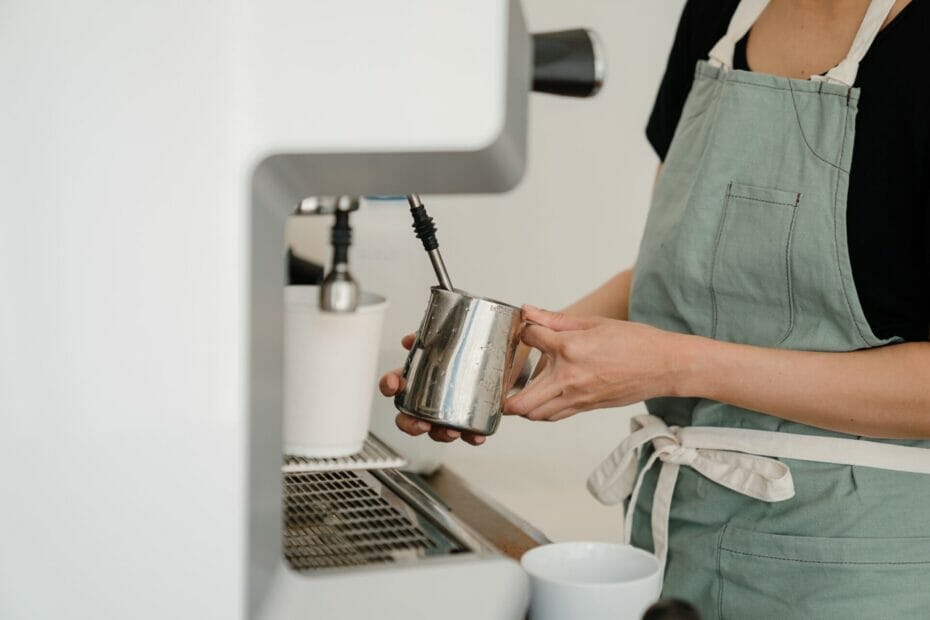How Do Coffee Makers Work?
Have you ever wondered how coffee makers work? Put simply, a coffee maker is a device that produces brewed coffee using ground coffee beans. It works by heating water to the desired temperature and then pumping it through the ground-up roasted coffee beans or bean powder.
The resulting hot liquid, called espresso or ‘coffee’, is then either served in cups, mugs, or pots or stored in a thermos. The process of making brewed coffee with a coffee machine involves several steps.
First, the correct amount of ground coffee needs to be added to the filter basket – usually around two tablespoons for every cup of coffee. Next, hot water is poured into the reservoir and heated until it reaches the desired temperature – usually between 185 and 200 degrees Fahrenheit.
Once heated, the machine pumps and pushes the water through the filter basket filled with ground-up roasted beans which extracts flavor from them and creates freshly brewed espresso.
Finally, additional ingredients such as milk and sugar can be added to enhance flavor and texture. As soon as these are mixed in with your espresso drink, it is ready for consumption!
Whether you’re an experienced barista or just getting started at home brewing your own delicious cup of java, understanding how an automatic coffee machine works will help you get a perfect brewing time.
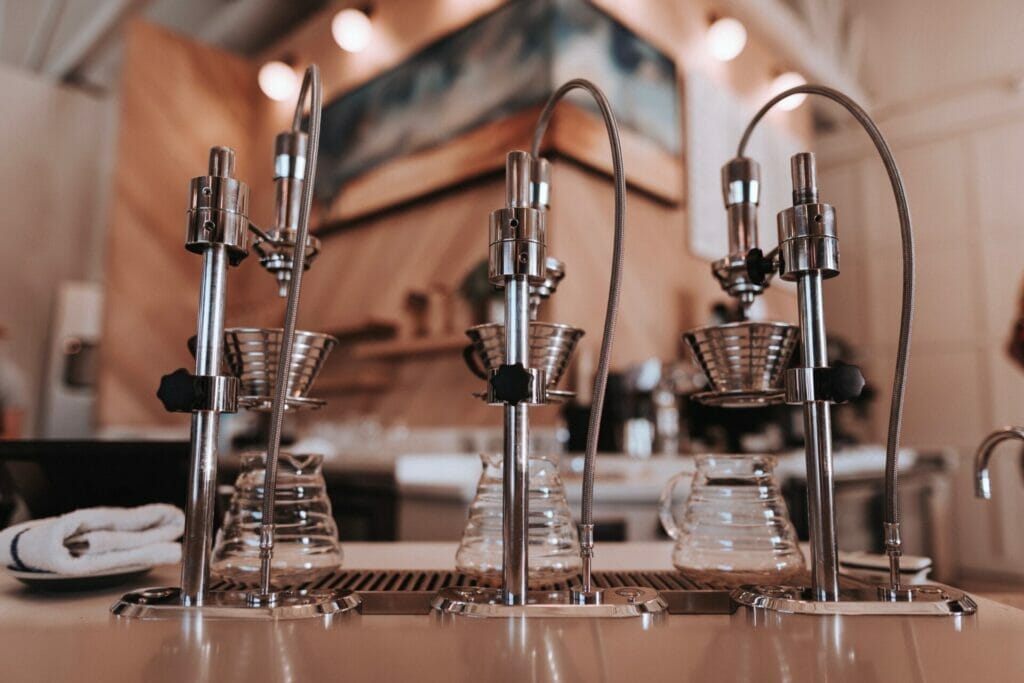
Coffee machines are a great way to make delicious coffee quickly and easily. But how do they work? Let’s take a look at the different kinds of coffee machines and how they use aluminum tubes, warm water, and coffee pots to brew your favorite cup of joe.
The most common type of single-serve coffee machine is the drip-style brewer. This machine uses an aluminum tube that runs from the reservoir base to the filter basket.
Hot water is pumped through this tube, heating up the grounds in the filter basket and producing freshly brewed espresso. The resulting liquid then passes through a spout into a carafe or coffee pot below.
Another popular kind of pod coffee maker is the French press. This device works by placing ground beans in a cylindrical container with a plunger on top.
When hot water is poured over the grounds, it steeps for several minutes before being pressed down with the plunger, trapping all of the flavors inside. The resulting liquid can then be poured into cups or mugs for consumption.
Finally, there is a single-serve coffee maker that uses pre-packaged pods or capsules filled with ground beans to produce espresso kinds of drinks quickly and easily. These machines use a heating element to heat up the water and force it through the pod, producing a freshly brewed espresso in just seconds.
No matter what type of coffee machine you use, understanding how they work will help you get the most out of your brewing process.
Drip Coffee Machines
Components
A drip cup coffee machine has a few key components that make it work. At the heart of it is an electric heating element which warms up the water and then passes it through the grounds.
The water then drips into your carafe, forcing out all those delicious flavors from your freshly ground beans! This can be controlled with a timer, enabling you to have a fresh coffee-making process with minimal effort.
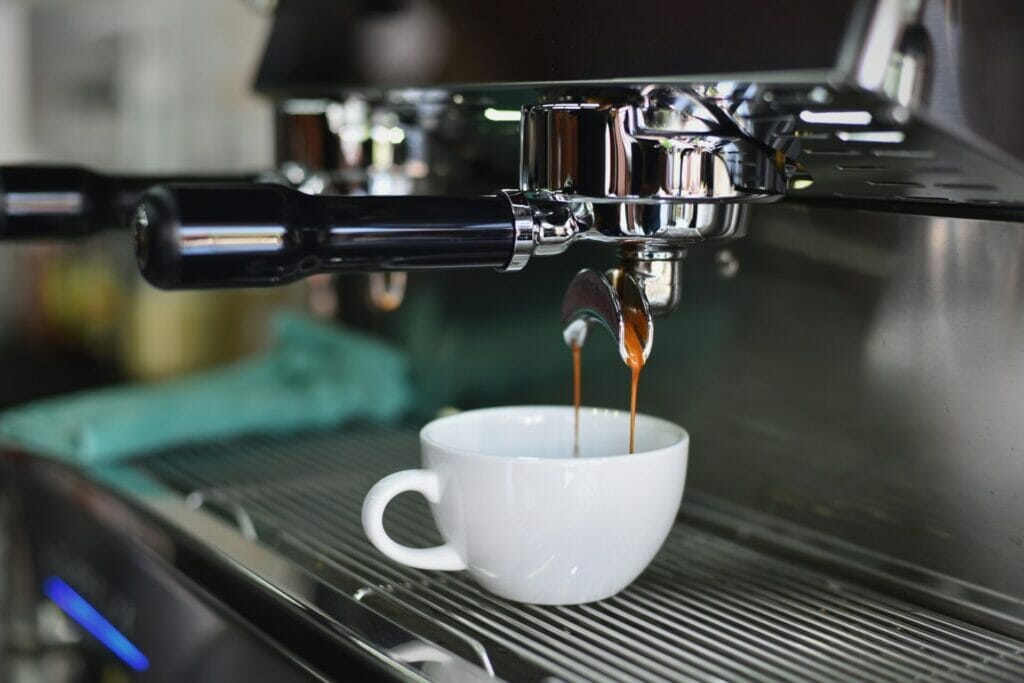
The brewing chamber is where it all happens. It contains a filter basket where you place your ground coffee, which allows for extraction into the carafe below and serves as a connection between the reservoir with water and the cheap coffee maker deals itself once sealed.
The water reservoirs on coffee machines are just as important because it’s what contain the hot water and funnels it into the brewer chamber when ready. Lastly, there’s the carafe itself – made from either stainless steel or glass – or both!
Usually, they come with filtering lids to keep out unwanted particles while pouring your cup of joe. All of these components are essential in producing a quality cup of coffee.
Working Of The Heating Element
The heating element coil of a drip coffee machine plays a key role in making your morning cup. This part is responsible for warming and circulating hot water, which is then mixed with the ground coffee to create the perfect brew.
The resistive heat element works by using electricity to generate heat and circulation. Heat is generated through two pieces of wire, with the electrical current running from one end to the other.
This generates a powerful current that raises the temperature of the water so it can be distributed evenly throughout your device and make sure you get consistent results when using it for your daily coffee ritual.
To ensure the proper optimal temperature is maintained, most drip coffee machines come with thermostat control which enables you to set your desired level of heat as per your need. This way, you don’t have to worry about going overboard with extra heat or getting a bitter drink due to too little!
Process Of Making Coffee
Making coffee with a drip coffee machine is a simple but satisfying roasting process.
First, you’ll need to measure out the desired amount of ground coffee beans and place it in the filter attached to your machine. Then, you’ll add freshly-boiled water over the grounds – an important step to ensure maximum flavor extraction from the beans. After all of the water has passed through, you should be left with a delicious cup of coffee!
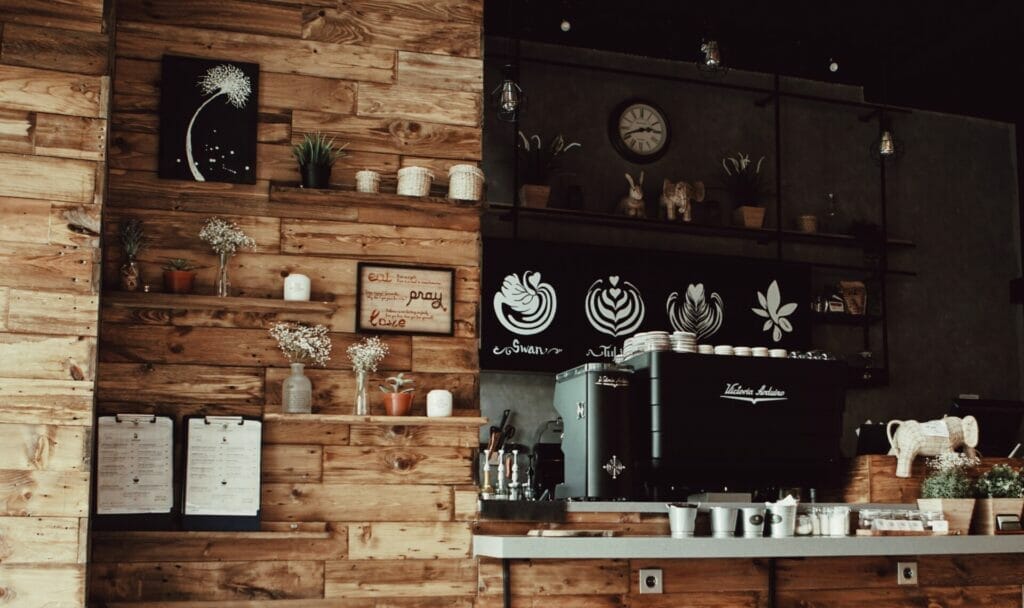
You can control the strength of your brew by altering how many coffee grounds you use or even by controlling the flow rate of boiling water that passes through. Additionally, if using filtered or bottled water is part of your routine, then you can expect an even smoother-tasting drink!
With all these options, there’s no doubt that a basic drip coffee maker is one of the most versatile pieces of kitchen equipment.
How To Fix A Clogged Machine?
Having a clogged machine can be incredibly frustrating, especially when you have coffee drinkers coming in looking for a smooth cup of java. But don’t worry, there are a few ways that you can fix your clogged machine!
The first step is to check and make sure the filter you are using is not outdated or damaged and replace the filter if necessary. After that, be sure to thoroughly clean the filter holder and carafe before adding new grounds. You’d also want to use high-quality coffee beans and grind them fresh – this helps ensure a smoother flavor.
Finally, if necessary, run some water through the filter basket to flush out any remaining ground. Doing this every month will help prevent future clogs from occurring!
Even if all else fails, it might be worth giving your machine a professional cleaning from time to time so it can continue running smoothly and serving up delicious cups of coffee all year round!
Espresso Machines
Components
When it comes to making a perfect cup of espresso, components do matter. Professional Espresso machines come with various components that are key for producing delicious double espresso.
The most important component is the boiler, which controls the heat and pressure of the water used in brewing – without proper control, your espresso machine pump won’t be as great as you want it to be.
Additionally, group heads are crucial in regulating how much water is pushed through coffee grounds during extraction. As water runs through the grounds, the amount of pressure and speed must be calibrated precisely or you may run the risk of over-extraction or under-extraction, which won’t give you that silky smooth texture that high-quality espresso should have.
And lastly, filters – help extract all those oils and fragrances from freshly ground coffee beans and also control how fast or slow water passes through them.
All these parts help create a perfect cup of espresso so if you’re considering buying an espresso machine for home, make sure to check out these components first!
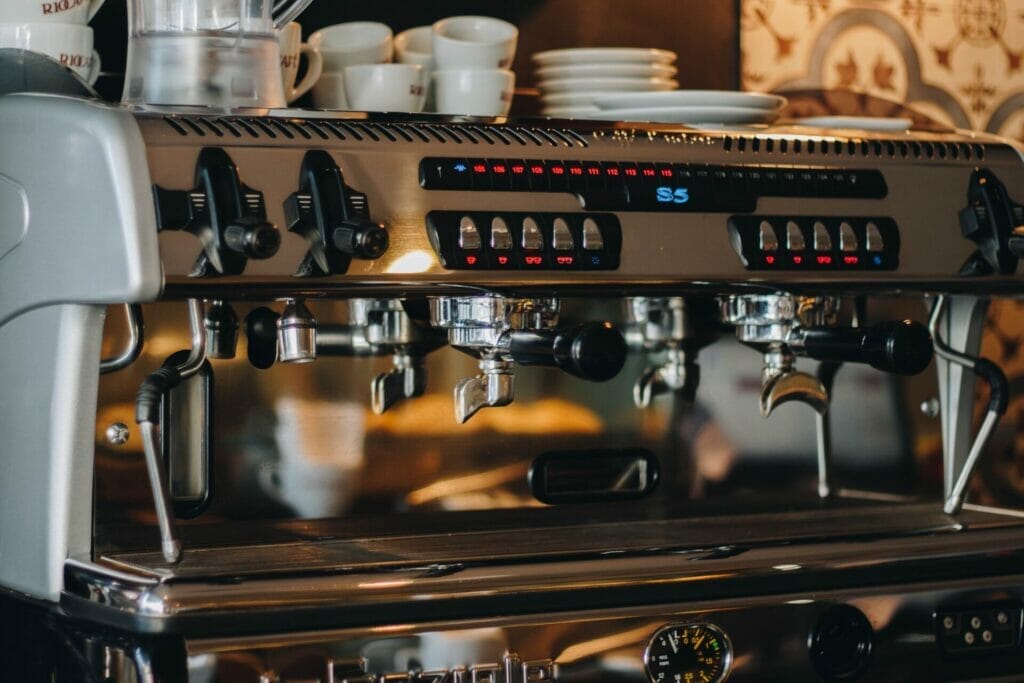
Process Of Making Coffee
Making a great cup of coffee starts with understanding the basic process involved in espresso machines. To make coffee, one needs to grind freshly roasted beans, which should be freshly ground in order for minimal oxidation, maintain consistent particle size and extract maximum flavor through optimal brewing at optimum temperatures and times.
Once the beans have been ground, they are placed into an espresso portafilter. Hot water is then pressured through the portafilter at 9 bar of pressure; this water, combined with the pressure extracts more complex flavors and aromatics from the grounds than hot water alone. The result is a thick and flavorful shot of espresso.
Some machines offer additional features such as milk-frothing capabilities or pre-programmed settings that allow users to make specialty beverages with just a few clicks. All these features help make making an excellent cup of espresso easy and efficient. With the right select quality components and care, espresso can be enjoyed for years to come!
Common Problems
Using an espresso machine can be a great way to prepare tasty coffees, but there are some common problems that you may encounter when using them. One common issue is clogged brewing heads, which can occur if coffee grounds are left inside the filter basket or not cleaned out properly. This prevents the water from flowing properly and will result in an under-extracted coffee.
Making a barista-style hot drink at home is easier than ever with the right components. An espresso machine is an essential tool for any coffee lover, and it consists of several metal components that work together to produce a delicious cup of espresso.
The first component is the boiler, which heats up water and creates steam ready for extraction. This steam is then pushed through the ground coffee beans in the portafilter, releasing all those delicious flavors and aromas. The pressure created by this process also helps create air bubbles in the espresso shot, giving it a creamy texture.
Another important component is the group head, which regulates how much water passes through the grounds during extraction. If too much or too little water passes through, you may end up with an over-extracted or under-extracted shot of espresso – neither of which will give you that perfect barista-style drink.
Finally, filters are used to extract all those oils and fragrances from freshly ground coffee beans while controlling how fast or slow water passes through them. All these parts help create a perfect cup of espresso so if you’re looking to make barista-style drinks at home, make sure to check out these components first.
Keurig Coffee Machines
Components
Keurig Coffee Machines consists of several components that work together to provide coffee drinkers with the highest quality cup of coffee every time. The biggest components include a single-serve carafe, K-cup holder, water reservoir, and a holder for pods.
The carafe is made from durable plastic and comes in different sizes so that you can accommodate different preferences easily. It holds up to 24 caffeinated coffee beverages per fill!
The K-cup holder serves as the primary component during brewing, allowing the machine to puncture each individual K-Cup for a perfect taste.
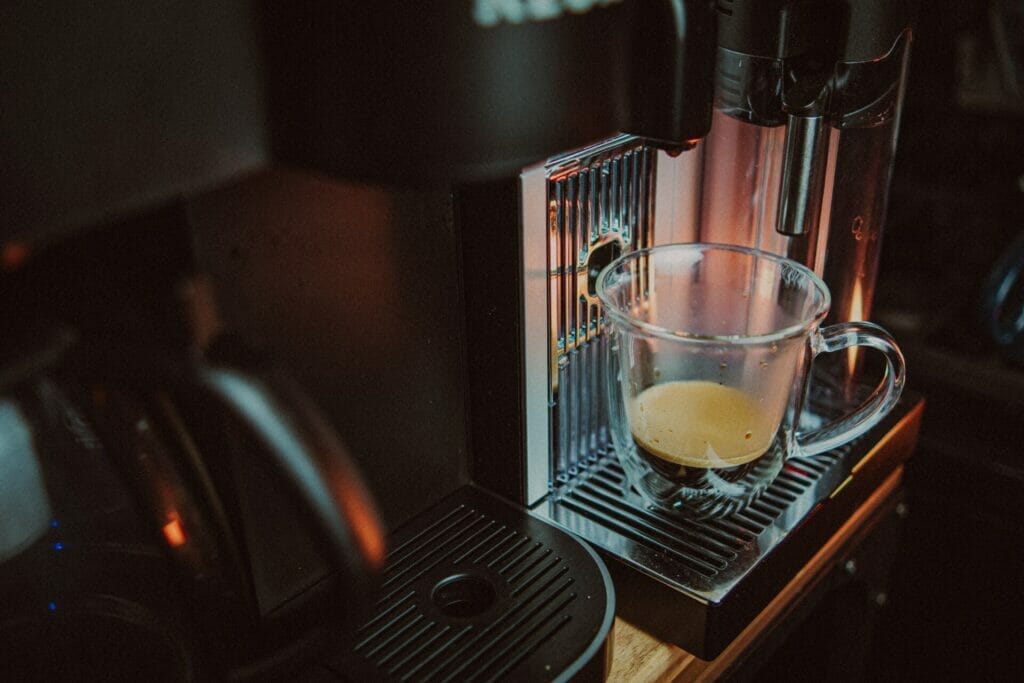
The water reservoir is also a crucial part of any Keurig Machine, as it holds enough liquid for one full pot of coffee base – more than enough to keep your caffeine worries at bay!
Finally, the pod holder offers friendly storage for used pods so that you don’t have to clean them after every use or worry about overflowing messes. All these Air bubbles components work together seamlessly to give you the best cup of joe possible!
Process Of Making Coffee
When you make coffee with a Keurig machine, the process is quick and easy. All you have to do is fill up the water tank, insert your K-Cup or K-Carafe pod of choice into the machine, and press start.
The Keurig Coffee Maker’s brewing technology then heats up the water and makes sure it reaches precisely the ideal temperature before releasing it through the pod and into your mug or carafe. Within minutes, you have yourself a perfectly brewed cup of hot delicious coffee!
The special pods that are used in a Keurig Coffee Maker also ensure that each cup of coffee has just the right amount of flavor and strength so you get the perfect taste every time. It’s no wonder why so many people around the world rely on their Keurig machines for their daily dose of caffeine!
Common Problems
Keurig coffee machines have become a popular way to make coffee brews quickly and with little effort. However, users can sometimes come across common problems when using these machines.
These issues typically consist of the machine not turning on, water not coming out correctly, or issues with the tank lid not sealing correctly.
If your Keurig coffee machine fails to turn on, you may need to unplug and then replug the power switch in order to reset the machine. You should also check to see if the circuit breaker has tripped as this can cause a sudden lack of machine power.
If water is coming out too slowly or inconsistently during brews, you may need to clean out the tube that runs between the reservoir and the heating chamber as clogs can cause problems here.
Lastly, if your lid isn’t sealing properly, it’s possible that some liquid could be getting into other parts of the machine which could cause malfunctioning in other areas.
Fortunately, many of these are fixable but it’s important to recognize any potential issue prior to use in order to avoid major problems down the road!
